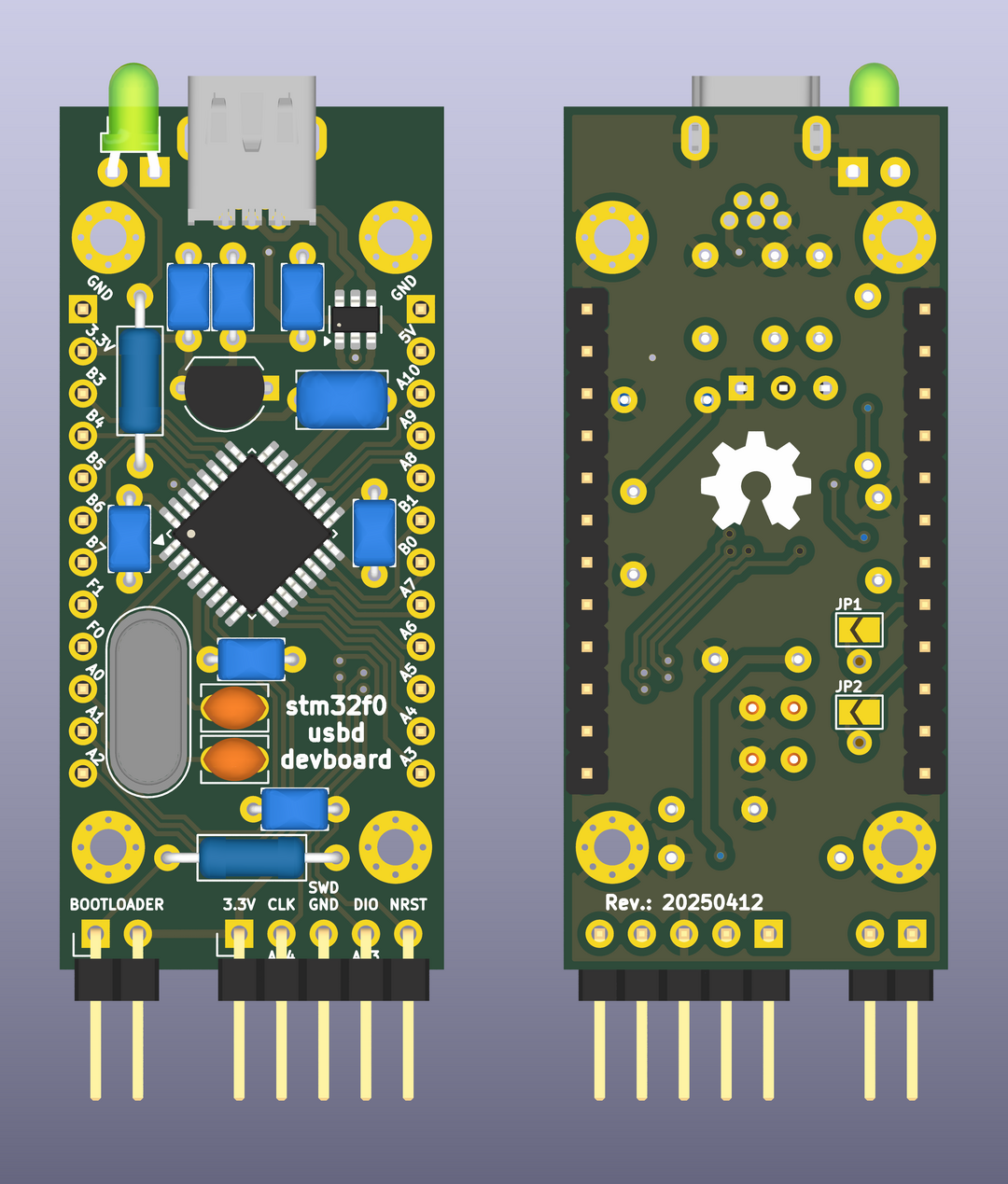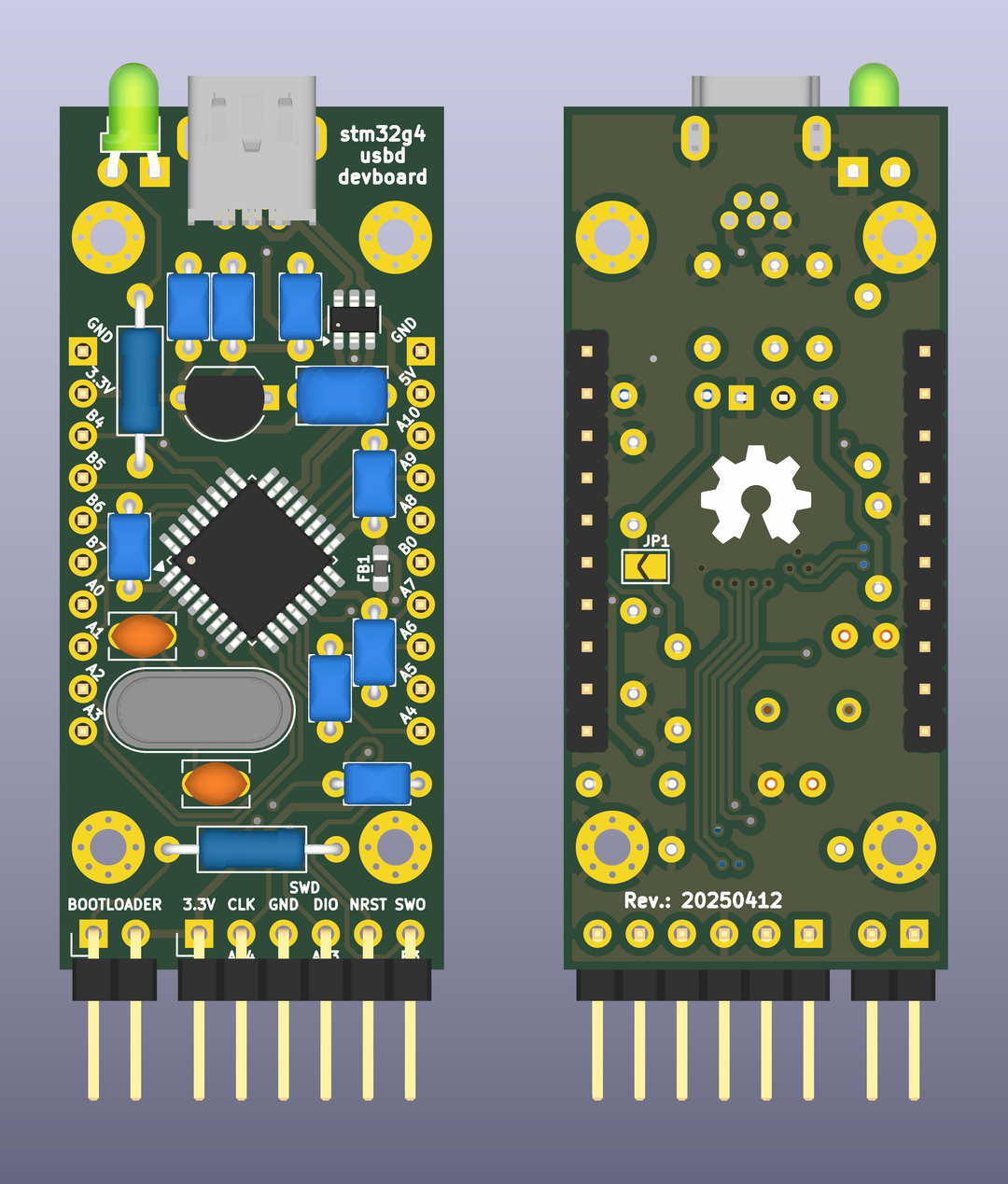stm32-usbd-devboards
Development boards designed for USB-related projects based on STM32F0 and STM32G4 microcontroller series.
Why?
There are plenty of STM32 Nucleo boards available on the market, at very reasonable prices. The Nucleo-32 boards only have one USB connector, which is used by the built-in STLINK programmer. They don’t have any USB infrastructure for the main microcontroller’s USB FS device peripheral. These boards address this issue in a straightforward and cost-effective manner.
Design choices
- The boards use small microcontrollers (
LQFP-32). These are ideal for bare-metal projects. - The boards are designed to fit in a breadboard and are primarily based on
PTHcomponents. - The boards have
SWDheaders and a jumper that activates the microcontroller'sDFUbootloader.
STM32F0 Variant
This variant makes the HSE crystal optional. It uses the HSI48 clock as the main clock, allowing the user to expose the PF0 and PF1 GPIOs to the board pins. The maximum possible clock frequency is the same as the HSI48 (48MHz), which is self-calibrated by the USB host. A crystal is generally only when the USB port is used only to power the device.
Revision 20250412
- Interactive Bill of Materials
- Schematics
- Gerber files
- Supported microcontrollers:
STM32F042K4T6,STM32F042K6T6. - Supports
HSEusing aHC49crystal. - The
JP1solder bridge connects the GPIOPF1to the board pinF1, and theJP2solder bridge connects the GPIOPF0to the board pinF0. These connections should not be made if a crystal is used asHSE. - The current version of the board has undergone a modification in its pinout. Previously, pins
F1andF0were interchanged, and they are now unconnected.
STM32G4 Variant
This variant usually requires the HSE crystal, even for USB-connected devices, because the HSI48 clock can't be used as the main clock. This means that if the HSI clock's precision isn't enough for the operation, a crystal must be installed for HSE. The PF0 and PF1 GPIOs are never exposed to the board pins.
Revision 20250412
- Interactive Bill of Materials
- Schematics
- Gerber files
- Supported microcontrollers:
STM32G431K6T6,STM32G431K8T6,STM32G431KBT6. - Supports
HSEusing aHC49crystal. JP1solder bridge skips the ferrite beadFB1if that part is not available, or the application is purely digital.- Only minor fixes since the previous revision.
Legacy Revisions
We have a dedicated page containing information about all legacy revisions.
License
The hardware is released under a CERN-OHL-S-2.0 license.

